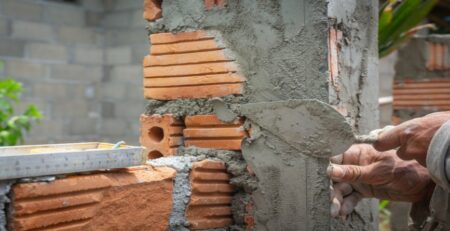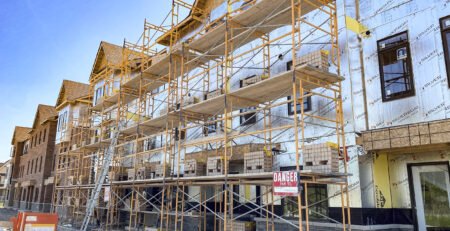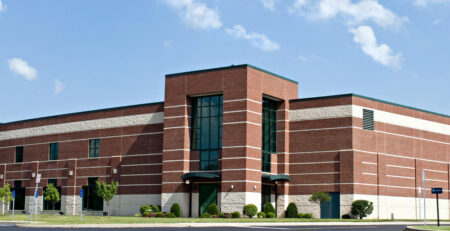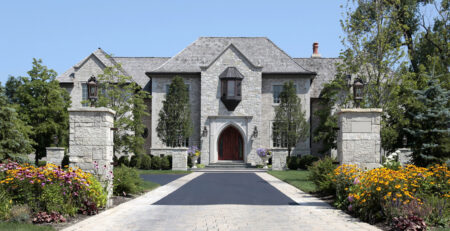Architect vs Engineer and their Role in Masonry Construction
Masonry construction is a foundational element in architectural design, known for its durability, aesthetic appeal, and structural integrity. In the realm of masonry contracting in GTA (Greater Toronto Area), both architects and engineers play crucial roles.
While architects focus on the overall vision and design aesthetics, engineers bring their technical expertise to ensure the structural soundness of masonry structures.
This blog post aims to explore the distinct responsibilities of architects and engineers in masonry construction, highlighting their collaborative efforts in creating lasting and visually captivating architectural marvels.
The Role of Architects
Architects are the creative visionaries behind masonry construction projects. Their expertise lies in conceptualizing and designing structures that blend functionality with artistic expression. In the context of masonry contracting in GTA, architects play several pivotal roles:
Designing Aesthetic Structures:
Architects consider the client’s requirements, cultural context, and site characteristics to develop masonry designs that are visually appealing and harmonious with the surrounding environment. They focus on aspects such as proportions, material selection, texture, and detailing to create architectural masterpieces.
Coordinating with Clients:
Architects act as the liaison between clients and masonry contractors. They facilitate communication, understand clients’ needs, and translate them into design concepts. Architects ensure that the masonry construction aligns with the client’s vision while adhering to safety standards and local regulations.
Providing Construction Documents:
Architects produce detailed construction drawings and specifications that guide masonry contractors throughout the construction process. These documents outline the masonry materials, dimensions, and finishes, ensuring that the desired design intent is accurately realized.
The Role of Engineers
Engineers bring technical expertise to masonry construction, focusing on the structural aspects of the project. Their role is to ensure the safety, stability, and durability of masonry structures. In the context of masonry contracting in GTA, engineers contribute in the following ways:
Structural Analysis and Design:
Engineers analyze the structural requirements of masonry construction, considering factors such as load-bearing capacities, seismic considerations, and environmental impacts. They design the structural elements, such as walls, columns, and foundations, ensuring they can withstand the imposed loads and meet safety standards. Also, seasonal maintenance checklists of masonry structures will give it a longer life and away from any seasonal defects.
Material Selection and Testing:
Engineers assess various masonry materials, including bricks, blocks, and mortar, to determine their suitability for the project. They consider factors such as compressive strength, moisture resistance, and thermal performance. Engineers may also conduct material testing to validate the quality and performance of masonry components.
Collaboration with Architects and Contractors:
Engineers collaborate closely with architects and masonry contractors to ensure that the design intent aligns with structural feasibility. They provide technical guidance during the construction phase, addressing any masonry challenges and ensuring compliance with building codes and regulations.
Collaborative Efforts
The success of masonry construction in GTA relies on the collaboration between architects, engineers, and masonry contractors. Architects and engineers work in tandem to balance creative expression with structural integrity. This collaboration includes:
Design Integration:
Architects and engineers collaborate during the design phase to ensure that architectural visions are translated into structurally sound masonry constructions. Engineers provide technical feedback to architects, suggesting modifications or optimizations to enhance structural efficiency without compromising design intent.
Regular Communication:
Architects and engineers maintain ongoing communication throughout the project, discussing design changes, structural considerations, and resolving any conflicts or challenges that arise. This open dialogue fosters a cohesive approach to masonry construction, ensuring the project’s success.
Quality Control:
Architects and engineers collaborate with masonry contractors to oversee the construction process, ensuring that the masonry elements are installed correctly and meet the design and structural specifications. Regular site visits and inspections help maintain quality control and address any discrepancies promptly.
Conclusion
In the realm of masonry contracting in GTA, architects and engineers play distinct yet complementary roles. While architects focus on the aesthetic aspects and design vision, engineers ensure the structural integrity and safety of masonry structures. Through their collaboration, these professionals bring forth architectural marvels that seamlessly blend creative expression and technical expertise, leaving an indelible mark on the landscape of masonry construction.











